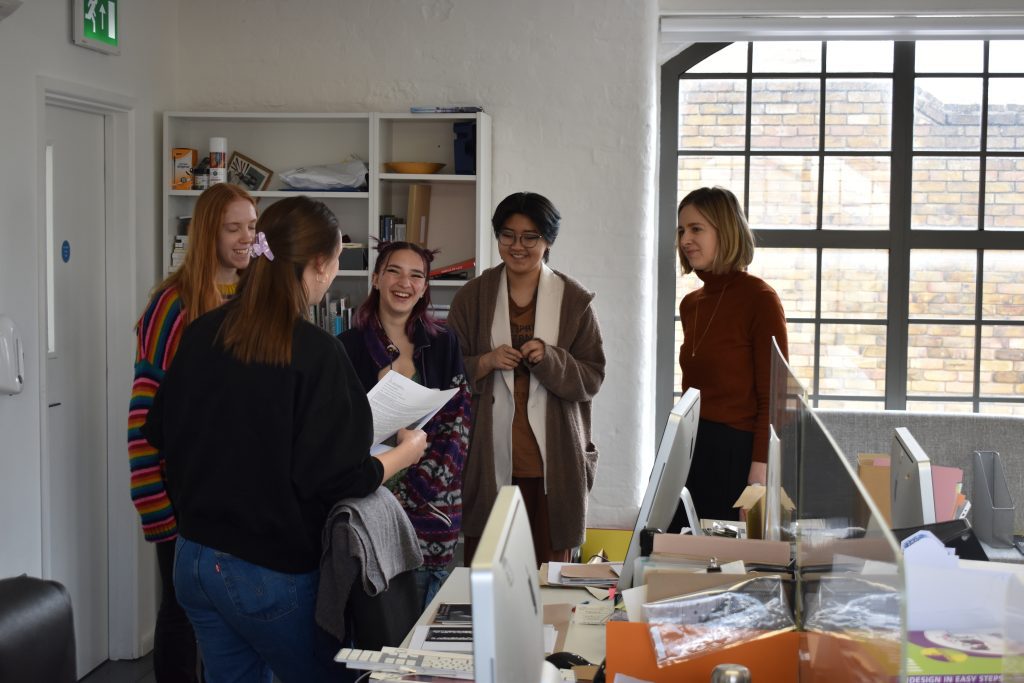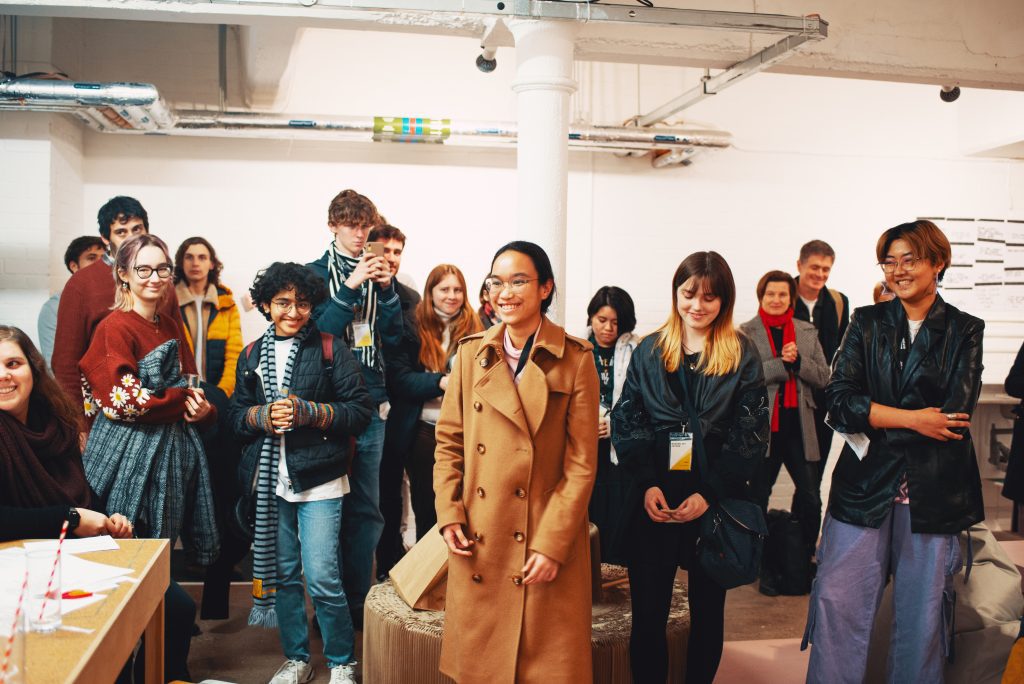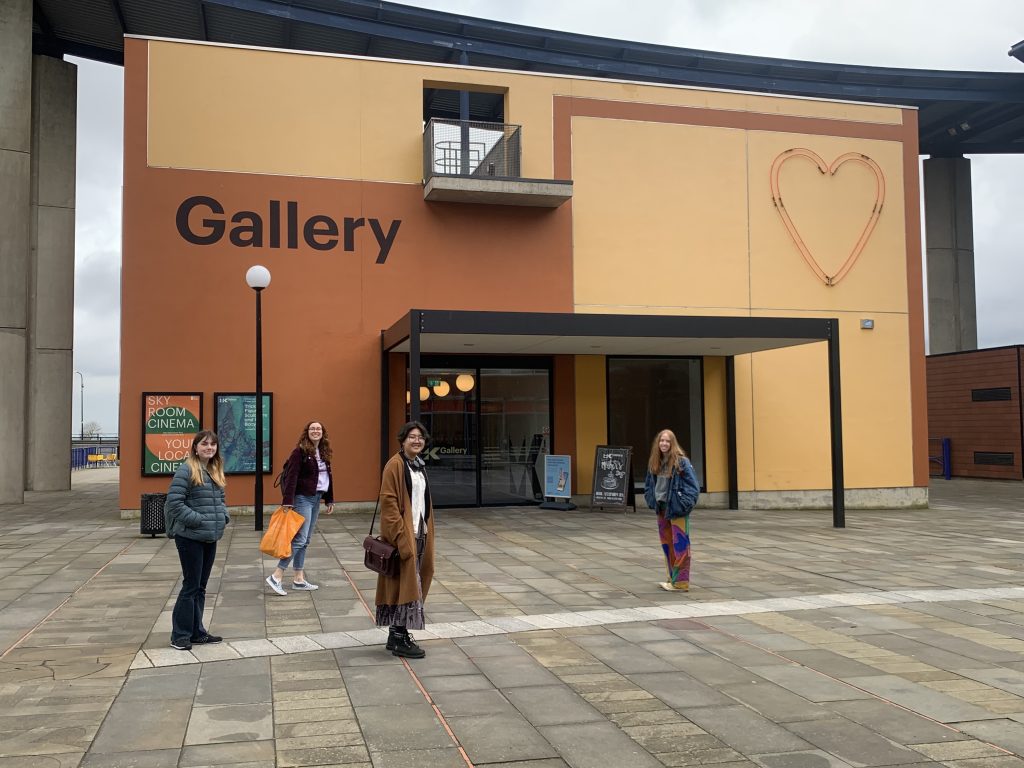Making Creative Projects Happen - The Young Creatives
Each year, Modern Art Oxford invites 8 Young Creatives aged 16-19 to bring new perspectives to our programme. In 2023, the Young Creatives have been researching how artists and curators make creative projects happen.
The group met with Amy and Jess, Modern Art Oxford’s Curators, and with artist Carey Young during her exhibition Appearance at the gallery.
Following a visit to the exhibition Trickster Figures at MK Gallery in Milton Keynes, the group interviewed the gallery’s curators via email to find out about the process of putting the show together.
Our conversations have covered advice for artists, creative challenges, practical problems and Saturday jobs. Here, The Young Creatives share their thoughts with you.

Whilst speaking to Jess, Amy and Carey it was clear that they were very much human – a gentle reminder that we are all figuring things out on this floating rock and not to worry about reaching the vague pinnacle of ‘success’. You don’t need to be somewhere in 5 years after your graduation, you really don’t. But hedge your bets, be interdisciplinary. Bridge your skills, be an accountant for an art company.
Don’t worry if you find yourself in a job that’s not as creative as you hoped for, as long as you keep an open mind you will gain something that will help you on your journey. You may meet someone or something useful. What you learn may give you an interesting angle and positively influence your making. Carey was in an unrelated management job but overheard useful things such as information on cameras and tech which has then given her invaluable knowledge and confidence.
Be bold. Knock on the door, ask to be in a show, let the purpose of your art drive what you create. Get to know curators, and let this relationship develop over years. Understand how they work and collaborate – Jess said curators are there to help artists not knock them down. Don’t compromise, always ask for more money, it is not inappropriate to challenge fees. If an increased fee is not possible, you can always ask for a subsidy, for instance to cover travel costs. At MAO, artist fees are usually 10% of the total exhibition budget, an average of £3,000 for a new commission.
Time, your most valuable possession. It took Young over a year to fundraise for the new film for her solo exhibition at MAO. It takes years to develop a show. But don’t get too wrapped up in planning, Young highlighted that most of her career has been chance, with space and flexibility you are able to take chances that can lead you onto the correct path. Take every opportunity you are given, even if it doesn’t seem exciting, what you learn about yourself can change everything.

MK Gallery
MK Gallery defines curation in ‘a fairly straightforward way’ as the selection, sequencing and interpretation of works to explore an artist’s work, an artistic movement or theme.
To select the artists for Trickster Figures, Jes Fernie undertook a range of studio visits with artists she’d been interested in, then honed the group. When all the artists in the show were confirmed in Jes’ head they were all informed about everyone else in the show.
In several instances there is a synergy between artwork and space as for example Saelia Aparicio’s drawings or Alice Channer’s ‘Soft Sediment Deformation’ where the space and work integrate to become one as they were created specifically for these spaces. This isn’t universal throughout the exhibition, for example this wouldn’t apply to Siobhán Hapaska or Harold Offeh’s works.

The Young Creatives – Colour and Audience
Colour and evoking an emotional response in the audience is something we’ve been interested in. Colour psychology poses unconscious connections made by the brain in response to art. Many of the links between colours and emotions are universal because they affect the brain. Evolutionary instincts have grown to recognise yellow stripes as a sign of toxicity, telling us when food is unsafe to eat.
That is why although yellow can be seen as cheerful and energetic, specific shades can be so acidic they seem repulsive. The same colour can lead to different emotions depending on the specific shade, such as how blue or green a yellow appears. The colour in artwork will elicit psychological associations, even if the piece is devoid of colours, the lines may provide confusion or calmness based on ease of recognition of a subject.
Carey Young’s use of bold colours seem to draw on this effect. While the notion that such stark, bright colours exist within prisons (usually assumed to be depressingly colourless) might initially seem surprising and potentially positive, Young also elicits immediate shock and repulsion through colour; perhaps exposing our innate prejudices towards the prison system, and negative perceptions of criminality.
Modern Art Oxford
Jess and Amy spoke about an approach to curating that is curious and led by the curator’s own interests. But also willing to be led by artists and aiming to facilitate what they want to do.
They advise looking in archives without knowing what you’re looking for. Allow for a digestion period afterwards. Explore. Choosing what part of an artist’s story to tell is intuitive and personal.
How do you get started practically? In group exhibitions, start by thinking ‘which artists can this show not happen without?’ Approach them first.
The curators and artists we’ve spoken to have been honest about their mistakes and changes of plan. This inspires creativity even more. This reminds us that art allows mistakes to be made.
The 2023/23 Modern Art Oxford Young Creatives are: Alex Panejko, Alina Hu, Armin Csizmadia, Arina Colun, Benjamin Henning, Isabel Elsner, Lina-Maria Marrow, Lonnie Saragih, Mia Annesen-Wood and Ly Veerakul.
